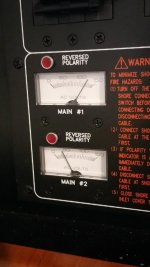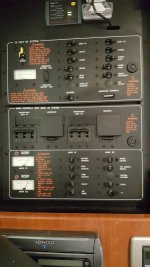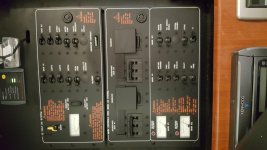Here's a pic of my elect panel. Agree this may be a loose connection, because I did another test this morning. This time, main 2 showed normal voltage when I flipped the transfer switch, which is different than what happened yesterday, where main 2 showed low voltage when I flipped the transfer switch. So when I saw normal voltage today after flipping the transfer switch, I continued to test main 2 circuit by turning on the breakers on that circuit. First, turned on water heater breaker, meter showed normal voltage. Next turned on Ice Maker breaker, still at normal voltage. Next turned on Stove breaker and turned the burner on high.. this time I saw the meter dip a little and then return to normal voltage. Lastly I turned on the TV breaker, and at that breaker the meter went to zero and the stove burner shut off. I then switched all the breakers off and switched off the transfer. I wanted a few seconds and switched the transfer back on and noticed that the meter now showed low voltage again, just like the photo in my first post above, where the meter is at the 30 mark.
I opened the panels to check for loose connections. All looked normal.
View attachment 8244




